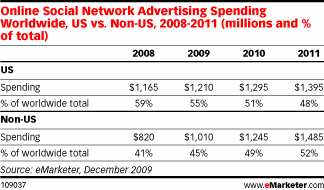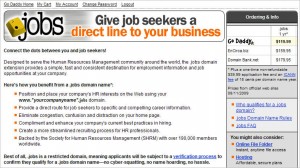“Improving the candidate experience” is a frequently used phrase. But—who’s really doing it, and how?
I was motivated to look into this question more closely by this comment on a recent post that discussed some psychological aspects of unemployment: “I am currently ‘in transition’ and can tell you that the suggestions you made would go a long way in making job seekers feel as though there is a light at the end of the tunnel.”
The suggestions? Offer encouraging messages and helpful advice on the Careers website; communicate with candidates; send rejection letters—and make them nicer; give every candidate a fair shake, even if they are not “passive.” Those steps seem like common courtesy and common sense.
So I decided to check out what the experts are saying on this topic, and what I found was very interesting. Most presentations and posts on this topic relate to increasing social networking and improving functionality. Generally, the advice is about technology 2.0 rather human interactions.
If you haven’t seen Improving the Candidate Experience, a 2009 presentation by consultant Elaine Oursler, catch it now on SlideShare. It’s an excellent overview, and offers some good insights. But only one slide (out of 28) is focused on how the candidate is actually treated. Slide 13, “Seven Ways to Build a Better Relationships Today,” includes these important points:
- Remember the golden rule: Treat every candidate the way THEY WANT to be treated.
- Avoid the “black hole” syndrome: No matter how many resumes you receive, acknowledge the receipt of a person’s resume or job application.
- Use technology for what it does best: Give the candidates what they want most – timely feedback. Use email for frequent, short communication.
- Recognize that small things lead to big impressions: Be attuned to professional details.
Are companies doing these things? Most are not avoiding the black hole syndrome, apparently. In a recent story titled Lifting the Curtain on the Hiring Process, Wall Street Journal Online reports: “Job hunters should expect to wait anywhere from a few days to several weeks before receiving a response to an application, if at all. A recent survey of 56 companies with at least 500 employees found that just 27% have a formal process to decline every external candidate they consider for an opening, reports CareerXroads, a human-resources consulting firm in Princeton, N.J.”
And speaking of CareerXroads, since 2002 they have been conducting an annual “Mystery Job Seeker” investigation, which regularly reveals unfortunate truths about the candidate experience. Have a look at their reports. On a more positive view, see Leslie Stevens’s 2008 article Improve the Candidate Experience, which features a nice case study on efforts at Whirlpool.
Finally—check out Kevin Wheeler’s prescription for Using Career Sites to Create a Positive Candidate Experience. Though not focused on human interactions, the article offers some good suggestions for engaging candidates through blogs, webinars, and even contests. Plus this idea for personalizing content:
Make the site adapt to the candidate’s needs. Build in choices so that candidates who are analytical can get data, facts, and charts while those candidates who are more verbal get similar information in text or pictures. Creating various forms of the same content is a clever and effective way of adding what seems to the candidates a personal touch to the website.
Takeaway: Technology can only go a little of the way toward making human resources more humane. In the final analysis, it’s the attitude of the company–from top leadership right down to resume screeners–that creates a positive (or negative) candidate experience.
(Thanks to lautsu for providing the impressionistic “black hole.”)


 Through the social Web, brands have more opportunities to earn media mentions from both traditional online publishers and new social Web publishers such as bloggers, Twitter users, Facebook users, and more. In fact, according to a study by
Through the social Web, brands have more opportunities to earn media mentions from both traditional online publishers and new social Web publishers such as bloggers, Twitter users, Facebook users, and more. In fact, according to a study by 
